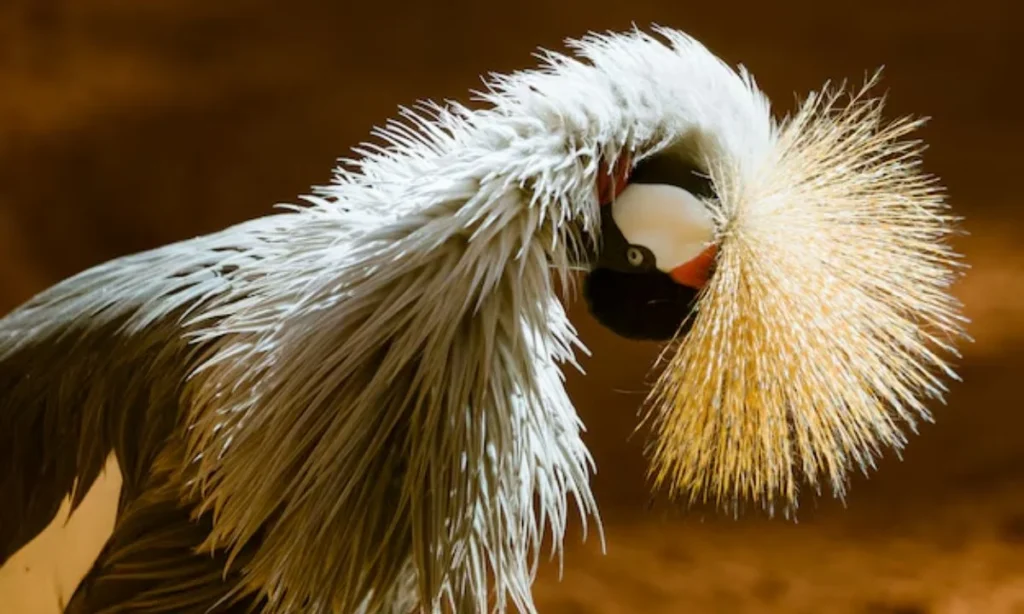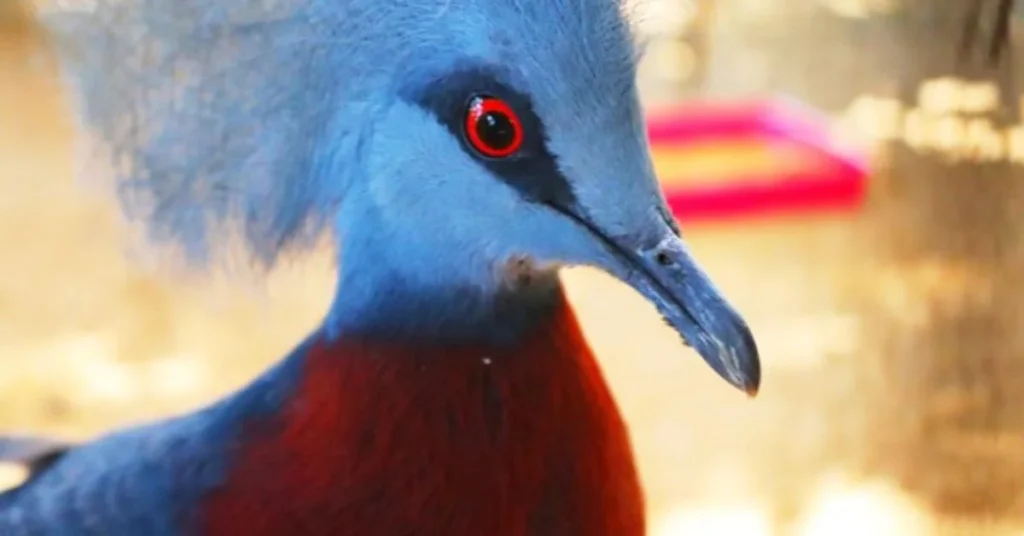
The Egyptian whoop bird eye is a fascinating part of one of the most unique bird species in the natural world. This bird, native to Egypt and other parts of North Africa, has distinct physical characteristics, with its eye adaptations being among the most remarkable. The whoop bird’s eye is designed for survival in its habitat, enabling it to see in ways that support its food-finding and predator-avoiding needs. Let’s explore what makes the Egyptian whoop bird eye so special.
What Is the Egyptian Whoop Bird?
The Egyptian whoop bird, also known as the hoopoe, is a distinctive bird species found in Egypt and other regions across Africa and Asia. With a striking crown of feathers on its head, this bird is easily recognizable. The whoop bird is known for its unique “whooping” sound, giving it its name, and its eye and vision adaptations play a crucial role in its daily survival.
Physical Characteristics of the Egyptian Whoop Bird
The Egyptian whoop bird has a unique appearance, with black and white striped wings, a slender body, and a fan-shaped crest on its head. Its eyes, specifically, are designed to spot small prey from a distance, even under difficult lighting conditions. These unique features make it a fascinating creature for bird enthusiasts and scientists alike.
Adaptations of the Egyptian Whoop Bird Eye
The Egyptian whoop bird eye is specially adapted to help it thrive in its habitat, providing excellent vision that supports its hunting and survival needs. The bird’s eyesight is especially sharp for spotting insects and small animals, which form a large part of its diet.
Must read V7 LED215W2R Power Supply: Ensuring Reliable Performance for Your Display
Enhanced Vision in Low Light
One of the unique features of the Egyptian whoop bird eye is its ability to see well in low light. This adaptation allows the bird to continue hunting at dusk or dawn when other birds may struggle to see. This special vision makes the whoop bird well-suited to its environment.
Wide Field of Vision
The Egyptian whoop bird’s eyes are positioned in a way that gives it a broad field of vision. This helps the bird keep an eye out for both prey and predators, allowing it to respond quickly to threats and opportunities in its environment.

The Role of the Egyptian Whoop Bird Eye in Hunting
The Egyptian whoop bird eye plays a critical role in the bird’s ability to hunt effectively. This species relies on sight rather than other senses, like smell, to locate its food.
Spotting Prey from a Distance
With its sharp eyesight, the Egyptian whoop bird can detect small insects and worms from a distance. This is particularly helpful in its environment, where food sources can be scarce, and quick spotting is essential for survival.
Precision in Depth Perception
Depth perception is crucial for the whoop bird when diving down to capture prey. The Egyptian whoop bird eye is adapted to measure distances accurately, enabling the bird to swoop down and snatch up prey with precision.
Why Is the Egyptian Whoop Bird Eye So Unique?
There are many reasons why the Egyptian whoop bird eye stands out among bird species. These adaptations not only make the whoop bird more effective at hunting but also contribute to its success in avoiding predators.
Adaptations for a Harsh Environment
The Egyptian desert can be a tough place for any animal, but the whoop bird has evolved an eye that can handle the bright, often glaring sun. Its eye structure is designed to filter out excess light, allowing it to see clearly even in bright conditions.
The Color and Structure of the Eye
The color and structure of the Egyptian whoop bird eye are adapted to its natural surroundings. This adaptation not only helps it see better but also camouflages it slightly, helping it blend into its environment and avoid predators.
The Egyptian Whoop Bird Eye and Evolution
The Egyptian whoop bird eye is a prime example of evolutionary adaptation. Over centuries, the whoop bird’s eye has developed features that allow it to survive and thrive in its specific environment.

How Evolution Shaped the Whoop Bird’s Eye
Evolution has enhanced the whoop bird’s eye, enabling it to adapt to its surroundings. These adaptations are a result of natural selection, where traits that help the bird survive are passed down to future generations.
The Impact of Environment on Eye Development
The Egyptian whoop bird’s eye development is influenced by its environment. In Egypt’s desert landscapes, specific vision adaptations are essential for survival, driving the evolution of its unique eyesight.
How Does the Egyptian Whoop Bird Eye Compare to Other Birds?
The Egyptian whoop bird eye has distinct qualities that set it apart from other bird species. Its adaptations are suited specifically for its desert environment, unlike birds that live in forests or wetlands.
Differences in Visual Adaptations
While forest birds might have adaptations for spotting prey among dense trees, the whoop bird’s eye is designed for wide, open spaces. This difference highlights how various birds have eyes adapted to their unique environments.
Superior Vision in Harsh Conditions
Compared to other birds, the Egyptian whoop bird eye is better suited to withstand bright sunlight and low light conditions. This allows the bird to hunt effectively throughout the day and even at twilight.
Fun Facts About the Egyptian Whoop Bird Eye
The Egyptian whoop bird is a fascinating creature with several unique traits. Here are some interesting facts about the Egyptian whoop bird eye:
- Adaptation to Bright Sunlight: The eye has a unique structure that allows it to filter out bright sunlight, essential in the hot Egyptian desert.
- Night Vision: Although it’s not a nocturnal bird, its eyes allow it to see well during dusk and dawn, offering a hunting advantage.
- Unique Eye Coloration: The whoop bird’s eye color blends well with its feathers, providing a natural camouflage.
Conclusion
In conclusion, the Egyptian whoop bird eye is an extraordinary example of nature’s power to adapt. With vision features that allow it to survive in the challenging Egyptian environment, the whoop bird is well-equipped to find food and evade predators. These eye adaptations not only help the whoop bird hunt but also play a crucial role in its overall survival. By understanding the Egyptian whoop bird eye, we gain insight into the incredible ways nature designs creatures to thrive in their specific habitats. Click here for more.
This article offers a look into the fascinating world of the Egyptian whoop bird and its extraordinary eye adaptations, showing how nature equips creatures to thrive. Let me know if you’d like to add more detail on any specific section or discuss further about other unique adaptations of this incredible bird!

What makes the Egyptian whoop bird eye unique?
The Egyptian whoop bird eye is adapted for sharp vision in low light and bright sunlight, making it well-suited to its desert environment.
How does the Egyptian whoop bird eye help in hunting?
The bird’s sharp eyesight and depth perception allow it to locate and capture prey with precision, even in challenging light conditions.
Can the Egyptian whoop bird see in the dark?
While not fully nocturnal, the Egyptian whoop bird has enhanced vision for dusk and dawn, allowing it to see better than many other birds at these times.
How does the Egyptian whoop bird eye differ from other birds’ eyes?
Its eyes are specially adapted for the bright desert environment, with features like light filtering and wide vision for spotting prey and predators.
Why is eye adaptation important for the Egyptian whoop bird?
Eye adaptation is crucial as it enables the whoop bird to navigate, hunt, and survive in its harsh natural habitat.







